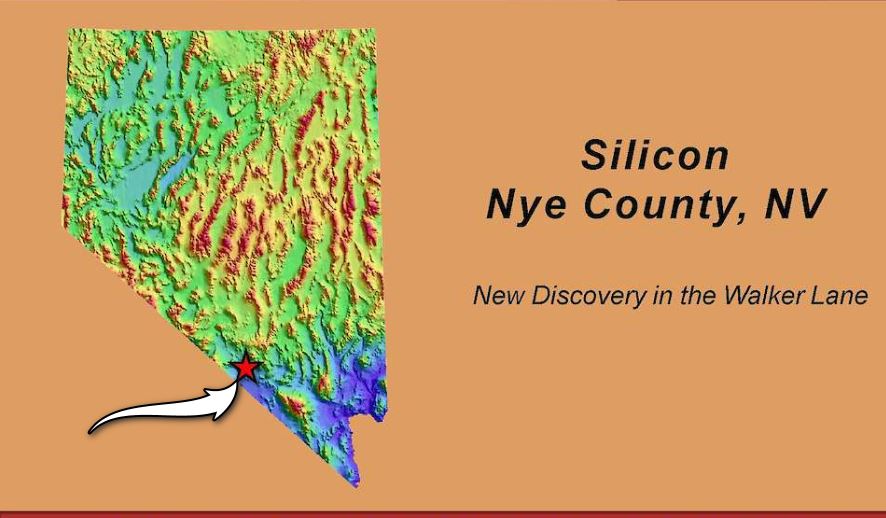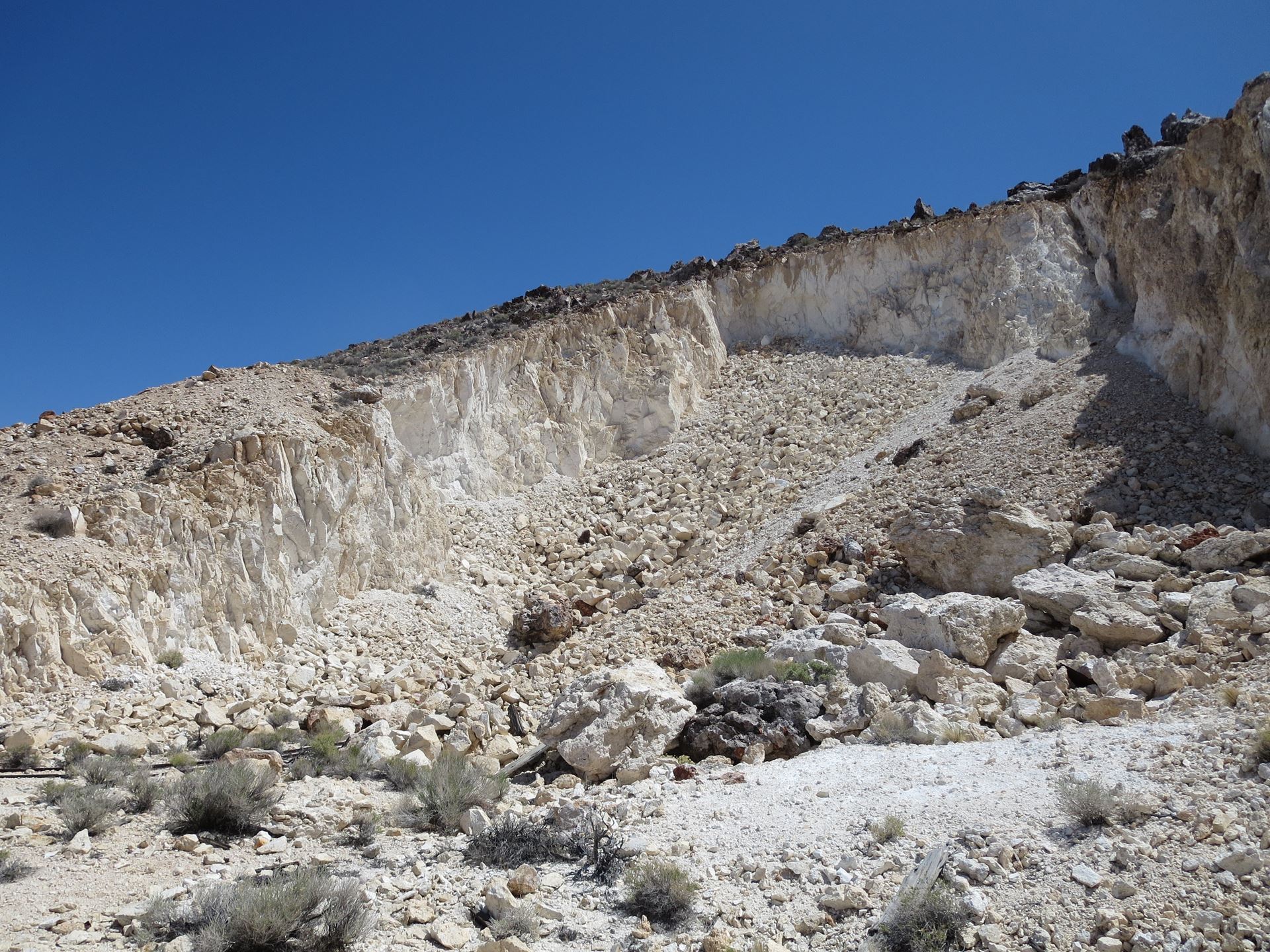Renaissance Gold Inc. on Silicon
Presented by
Mark F. Coolbaugh
AGS and GSN Members and Friends,
For this month, the Geological Society of Nevada and AGS will proudly co-host a virtual talk for GSN’s 8th symposium.
Please note that the meeting is scheduled for Thursday, August 27th, at 7:00 pm
Program: Renaissance Gold Inc. on Silicon
Speaker: Mark F. Coolbaugh
Zoom Information:
Meeting ID: 871 7379 3912
Passcode: Silicon
What you need to know to ZOOM
- You need a PC or Mac with computer audio and an internet connection to view and hear the presentation.
- Simply click on this URL and enter "Silicon" for the passcode:
https://us02web.zoom.us/j/87173793912?pwd=ZlpRL2NXYWFyazlONXlzaFB6aVZ6dz09
- If you have a web camera, you can toggle it on for others to see you. Or not.
- Be sure to keep mic muted during the presentation
No registration is needed for this event.
Program Information:

The Silicon Gold Project, Nye County, Nevada: Prospect Generation Methods leading to Initial Recognition, Acquisition, and Characterization
Mark F. Coolbaugh
Chief Geoscientist, Renaissance Gold Inc.
4750 Longley Lane, Reno, NV. 89509
with Daniel Pace, Lindsay D. Craig, Richard L. Bedell, and Marilyn S. Miller
August 27, 2020
ABSTRACT
Originally two GSN 2020 Symposium papers were to describe exploration work on the Silicon property northeast of Beatty, Nevada. The first paper, which is the focus of this talk, describes initial exploration work leading to acquisition of the Silicon property, while a second paper, by AngloGold Ashanti geologists, was to describe detailed exploration work, including drilling, defining the character and distribution of gold mineralization. Due to circumstances beyond the control of mortal geologists, the second paper has been delayed pending public release of relevant exploration results. It is anticipated that once results become public, we will hear much more about Silicon as AngloGold Ashanti geologists tell their story. Meanwhile, it is hoped that this talk will serve as an introduction to what we believe will become an important precious metal deposit in southwestern Nevada.
The Silicon project was generated in early 2014 when funding for gold exploration in a mature Nevada landscape was difficult. These challenges led to novel funding approaches, one of which involved exploring large tracts of land with financing provided by an investor in exchange for a royalty. One such tract, in southern Nevada, was explored by Renaissance Gold and funded by Callinan Royalties (now Altius Minerals). Exploration was conducted using a spatially methodical approach leveraged by multiple geologic, geopolitical, and environmental databases.
The Silicon area was initially identified within this tract using satellite imagery, which revealed a several-square-kilometer zone of intense advanced argillic alteration coincident with a group of mercury mines and prospects in the Bare Mountain mining district (Nye County). Initial field work identified an extensive steam-heated alteration zone with widespread structurally controlled mercury mineralization, a chalcedonic silica blanket, extensive acid-leaching, and an open pit where leached, residual, “powdery silica”-altered tuffs were mined for silica.
The property was staked in February 2014. A subsequent title search revealed a land withdrawal for the proposed Yucca Mountain nuclear repository rail corridor that covered 60% of the area. A decision was made to maintain claims outside the corridor and wait for expiration of the withdrawal at the end of 2015, at which time Renaissance staked the remainder of the property.
Continued exploration included geologic mapping and collection of 388 rock chip samples, 23 stream sediment samples, and 586 infrared spectrometer samples. Target models at depth included, in order of perceived likelihood: 1) low-sulfidation gold mineralization at a boiling horizon (e.g., nearby Bullfrog and North Bullfrog deposits), 2) gold mineralization at the Paleozoic-Tertiary unconformity (e.g., nearby Secret Pass and Mother Lode deposits), and 3) possible high-sulfidation mineralization. All three working hypotheses involved the presence of an overlying steam-heated alunite-kaolinite-silica zone at the current surface barren in gold.
Positive characteristics of the property included extensive steam-heated alteration highly anomalous in mercury, limited previous drilling, strong structural control at both regional and local scales, and the possible presence of a basement high at the Paleozoic-Tertiary contact at depth. Negative characteristics included a lack of gold and trace elements other than mercury in surface rocks and stream sediments, and the presence of low-gold illitic alteration at lower elevations on property peripheries. However, drill cuttings with illitic alteration sampled in the field contain up to 114 ppb gold, and drill-hole records, though of unverifiable reliability, included scattered low-grade gold intercepts of up to 9.1 meters of 0.96 ppm.
Crucially, it was believed that peripheral low-gold illitic alteration was not representative of the property potential, especially given the strong structural control observed. Nonetheless, the lack of surface gold made marketing challenging. AngloGold Ashanti optioned the property in 2017, and showed the insight and commitment necessary to test key targets at depth. Factors important for moving the property forwardincluded: 1) willingness to explore a property without gold at the surface, 2) persistence to resolve a challenging land situation, and 3) implementation of a systematic regional exploration program.

Speaker:
 Bio: Mark Coolbaugh is Chief Geoscientist of Renaissance Gold and has worked for RenGold and its predecessor, AuEx, since 2006. Mark has over 40 years of exploration and research experience that includes hard rock metals exploration and mining, geothermal exploration and research, and lithium exploration in the western US, Asia, Europe, and South and Central America. He holds a doctorate from the University of Nevada, Reno, a Master’s from the University of Arizona, and a Bachelor’s from the Colorado School of Mines.
Bio: Mark Coolbaugh is Chief Geoscientist of Renaissance Gold and has worked for RenGold and its predecessor, AuEx, since 2006. Mark has over 40 years of exploration and research experience that includes hard rock metals exploration and mining, geothermal exploration and research, and lithium exploration in the western US, Asia, Europe, and South and Central America. He holds a doctorate from the University of Nevada, Reno, a Master’s from the University of Arizona, and a Bachelor’s from the Colorado School of Mines.